Monthly Archives: December 2014
Iceland Gull (Thayer’s)
Bohemian Waxwing
White-winged Scoter
Iron Range Birding Scraps
In any project there is inevitably scrap material left over. Some pieces of lumber, fabric, etc. are just too good to discard, or more likely, the memories of long-gone, thrifty grandparents guilt us in to keeping these items. So we pile our garages and closets full of such things until they can be re-purposed, which never, ever happens. Except for today. The trip up north yielded two solid projects with the Great Gray Owl adventure and the Golden-crowned Sparrow chase, but there were plenty of good birding scraps that I couldn’t waste. In fact, they might even be worthy of being displayed on my 4th-grade science fair tri-fold that was stowed away in Grandma’s garage for decades.
Not every bird scrap here will have a photo. That’s just how it goes sometimes. Good bird sightings are good bird sightings period. So let’s kick off this post with the birds that were not photographed.
Black-billed Magpie
Black-billed Magpie is a great northern Minnesota bird, and the Sax-Zim Bog is the furthest-east that it is known to breed. Lately they have been popping up all over the Iron Range in the open agricultural areas. I found four a couple months ago just a few miles from my parents’ house. This trip I saw one fly across my in-laws’ gravel road. This was my best non-Great Gray Owl/non-Golden-crowned Sparrow sighting of the trip. I have traveled that road for almost 20 years and have never seen one there before.
Rough-legged Hawk
This is flat-out one of the best hawks. Many migrate through Minnesota during late fall, and since we’ve been birders I have seen them every time we visit up north this time of year. I am now starting to associate Thanksgiving with this bird instead of the turkey. Anyhow, just moments before that Black-billed Magpie, I got my best-ever look at a gorgeous light-morph perched on a power pole by the road. We were on our way to a family gathering so I didn’t have time to stop and photograph it. I did drive real slow when I went by, and that hawk and I locked eyes while it pivoted its head watching me when I went past, just like an owl would do. Super-cool.
Pine Grosbeaks
This bird was seemingly everywhere on the trip. I bet I saw over two dozen in various places. My sightings occurred exclusively as birds getting grit from the middle of roads. Anytime I stopped to get a photograph, they would split. Though I have seen gobs of these things on feeders long before I was a birder, this bird has eluded my camera since I got into birding. There was that one crummy cell-phone pic a couple years ago. I guess this one is a step-up. FYI – rolling down the windows of a toasty vehicle and then immediately taking pictures in the cold does not work; the heat waves from the car create interference in the picture. Instead, keep the windows down a bit as you roll along or turn down the heat.

Northern Shrikes
What birder doesn’t love a shrike of any stripe? Fall is the time when the Northerns replace the Loggerheads. Unlike the rare Loggerhead, the Northern Shrike is not terribly uncommon anywhere in the state during the winter. I found two when I drove through the Sax-Zim Bog on my way home from Duluth.
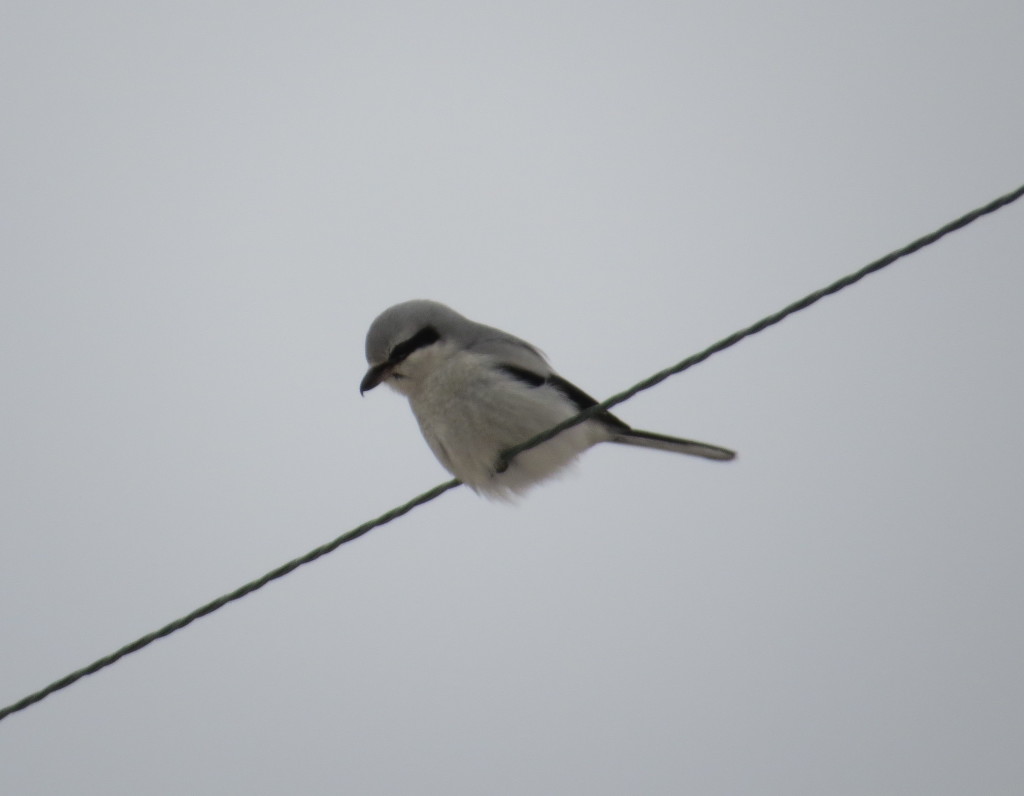
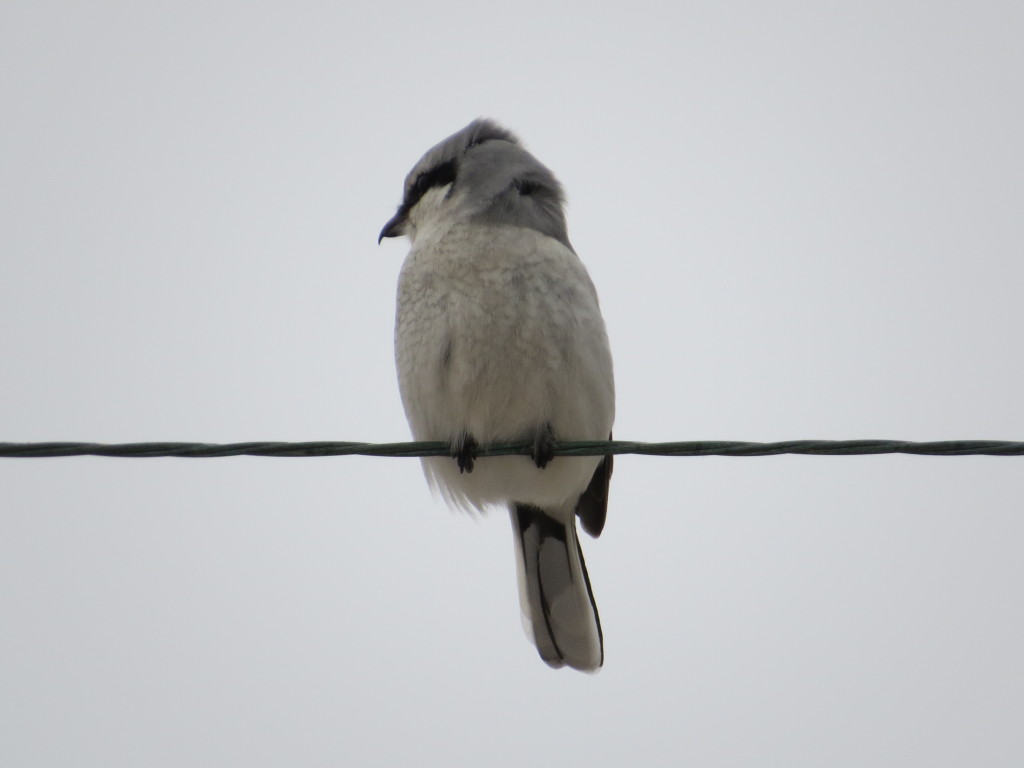
Ruffed Grouse – aka “grouse” to Minnesotans at large, aka “partridge” to Iron Rangers
We went to Melissa’s Grandma’s house on Turkey Day. This is always a fascinating place to do some birding while eating Grandma Evelyn’s delicious food and sipping some coffee. Pine Grosbeaks, Evening Grosbeaks, a Great Gray Owl next door. You know, the usual stuff. Knowing this, I walked up to the house with my camera in hand, eager to see what goodies were on Evelyn’s feeders. A large bird at the top of a birch tree immediately caught my attention.
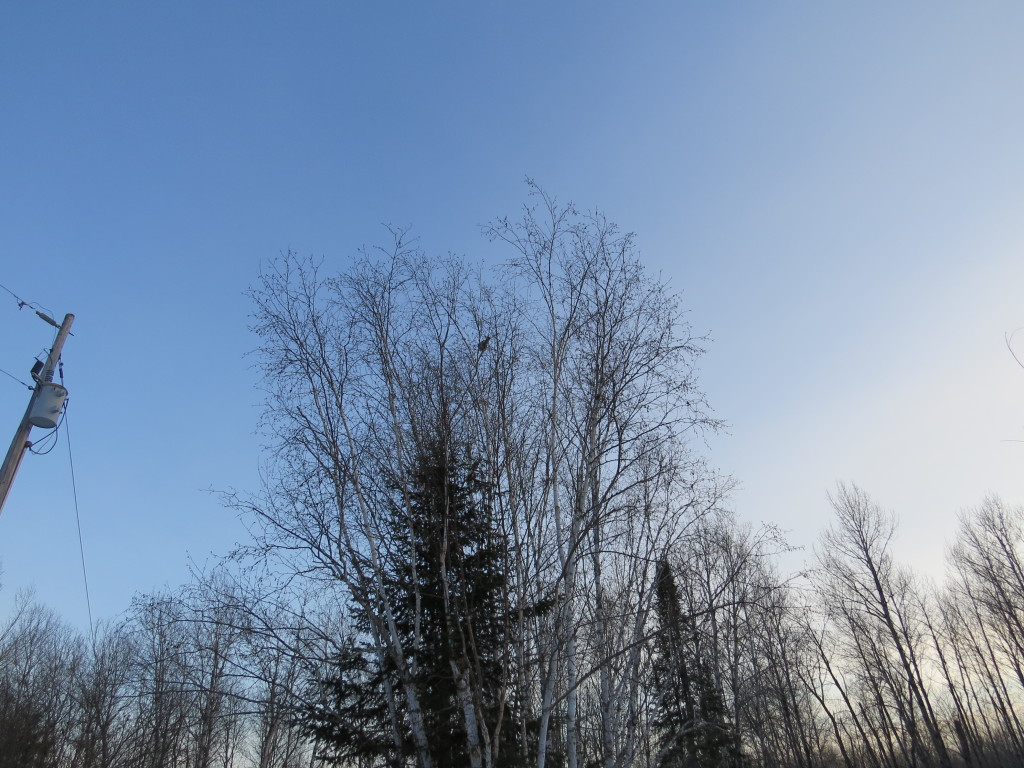
It was a grouse! Grouse in northern Minnesota are practically as common as chickens in a barnyard, but it was fun to see one so tame and without a care in the world other than stuffing his crop with all the birch catkins he could eat. Apparently he knew he wasn’t the bird of choice on this day and was safe from those who craved poultry. In fact, I walked all around the tree right underneath him while he busily ate the catkins.
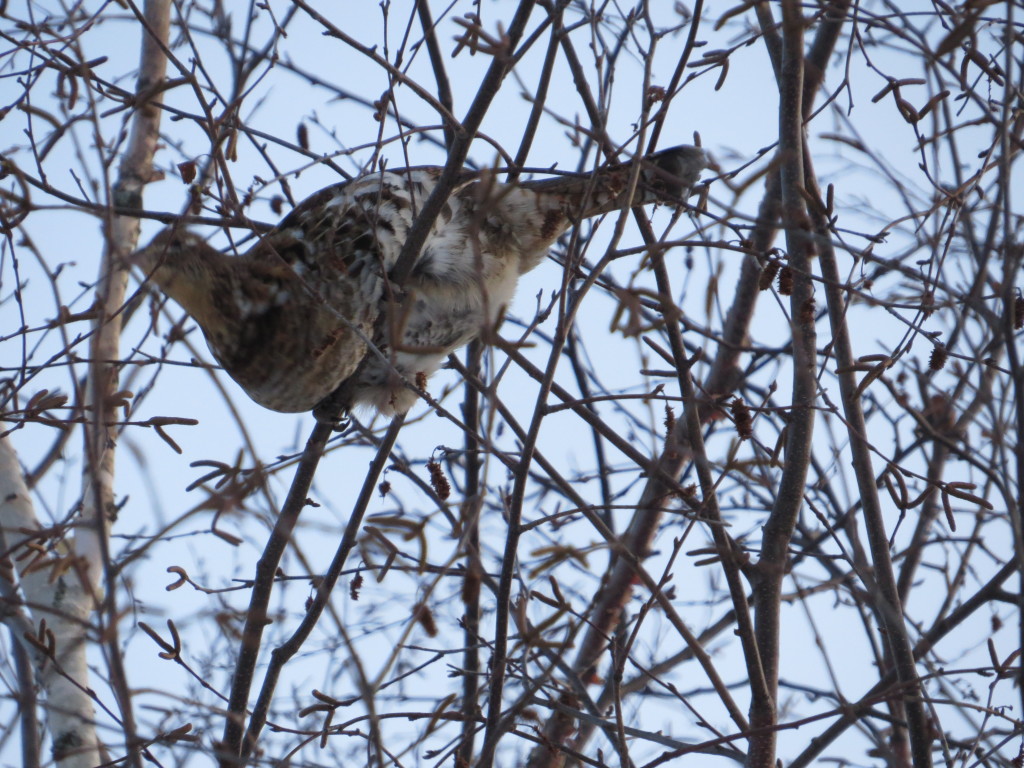
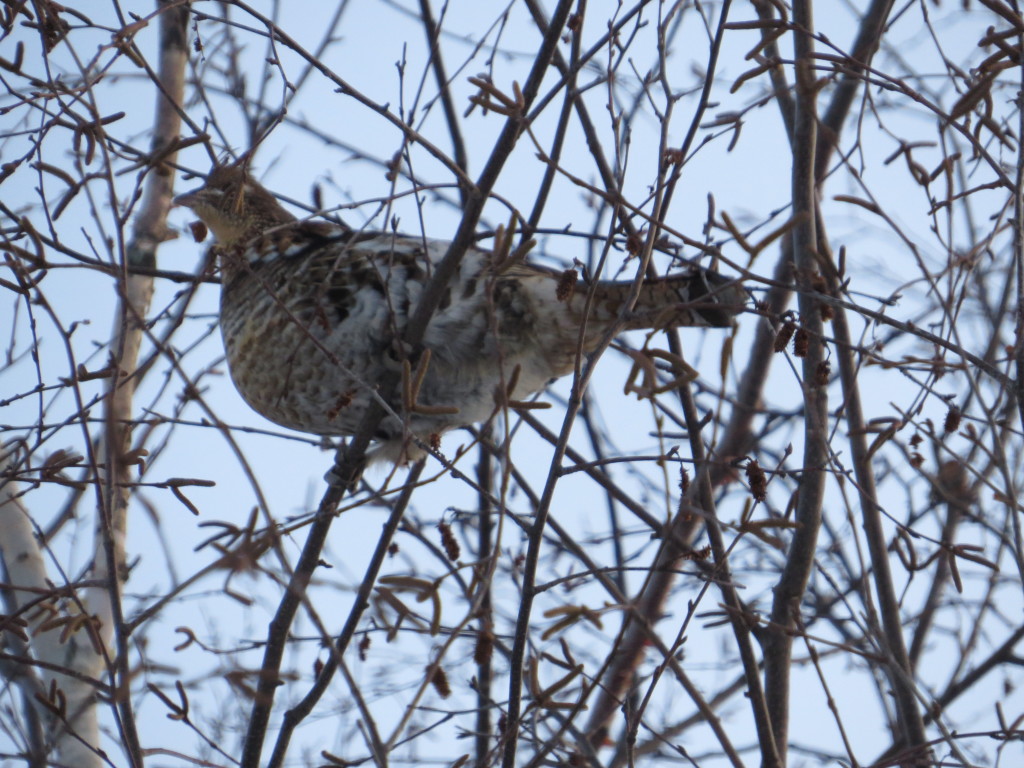
This was a real treat to be able to photograph this bird so close. The Ruffed Grouse has been a favorite bird of mine ever since I was a 13-year-old kid and had one flush across a wooded path right in front of me, and then it strutted on a log. One thing I particularly enjoyed about this grouse at Evelyn’s house was its long, red-phase tail. The long tail indicates that this is a male. Ruffed Grouse tails come in a gray phase or a red phase with a lot of variation in between. Most of the birds I see are gray phase. Here is a sample of this variation from Gordon Gullion’s The Ruffed Grouse. Gullion states that there are up to 30 color variations in the tails and provides loads of statistics on the rarity of the different types. The best tail feather I ever found as a kid was a gray-phase tail with an orange sub-terminal band instead of the traditional black.
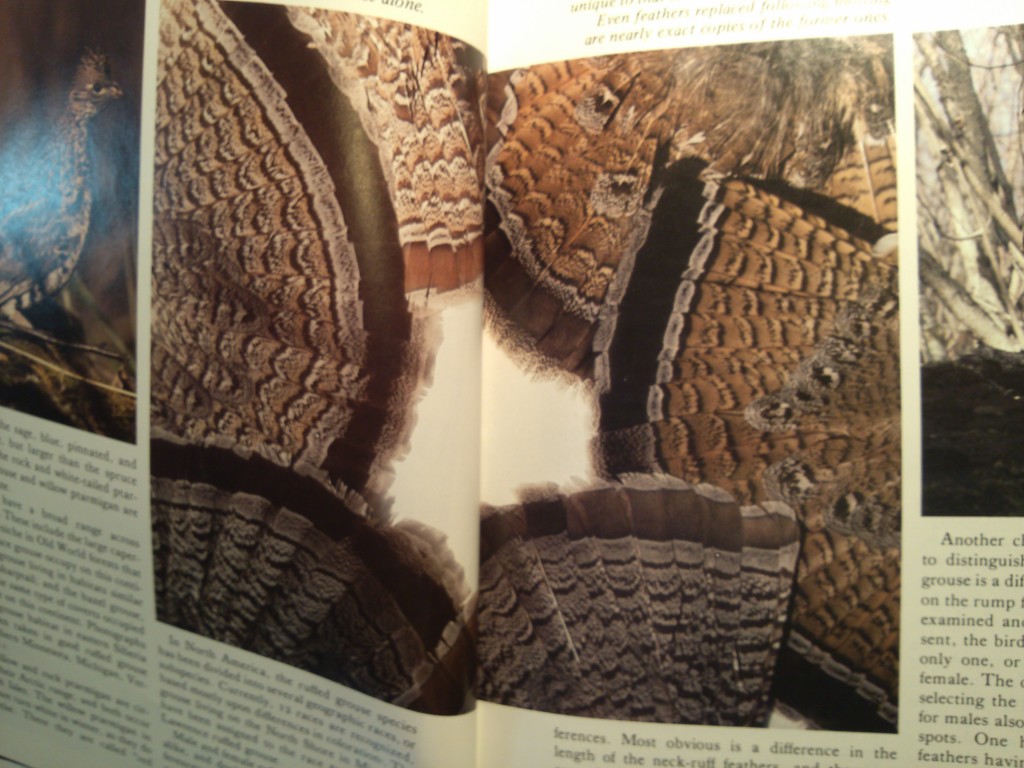 Fun fact from Gullion’s book: It is well-known that Ruffed Grouse completely burrow into powdery snow to keep warm on cold winter days. However, what is not well known is that the Great Gray Owl is the only known predator that can hear the grouse in their burrows and pluck them out of the snow! How cool is that?! Here I thought Great Grays just ate small rodents. As Gullion says, it’s fortunate for Ruffed Grouse that Great Gray Owls are not very numerous in northern Minnesota. If I ever witnessed such predation, I might have to hang up my binoculars and camera because it just wouldn’t get any better than that. Fortunately, Evelyn’s grouse doesn’t have to worry about such things yet with low snow totals. But he sure looks plump for the pickin’.
Fun fact from Gullion’s book: It is well-known that Ruffed Grouse completely burrow into powdery snow to keep warm on cold winter days. However, what is not well known is that the Great Gray Owl is the only known predator that can hear the grouse in their burrows and pluck them out of the snow! How cool is that?! Here I thought Great Grays just ate small rodents. As Gullion says, it’s fortunate for Ruffed Grouse that Great Gray Owls are not very numerous in northern Minnesota. If I ever witnessed such predation, I might have to hang up my binoculars and camera because it just wouldn’t get any better than that. Fortunately, Evelyn’s grouse doesn’t have to worry about such things yet with low snow totals. But he sure looks plump for the pickin’.
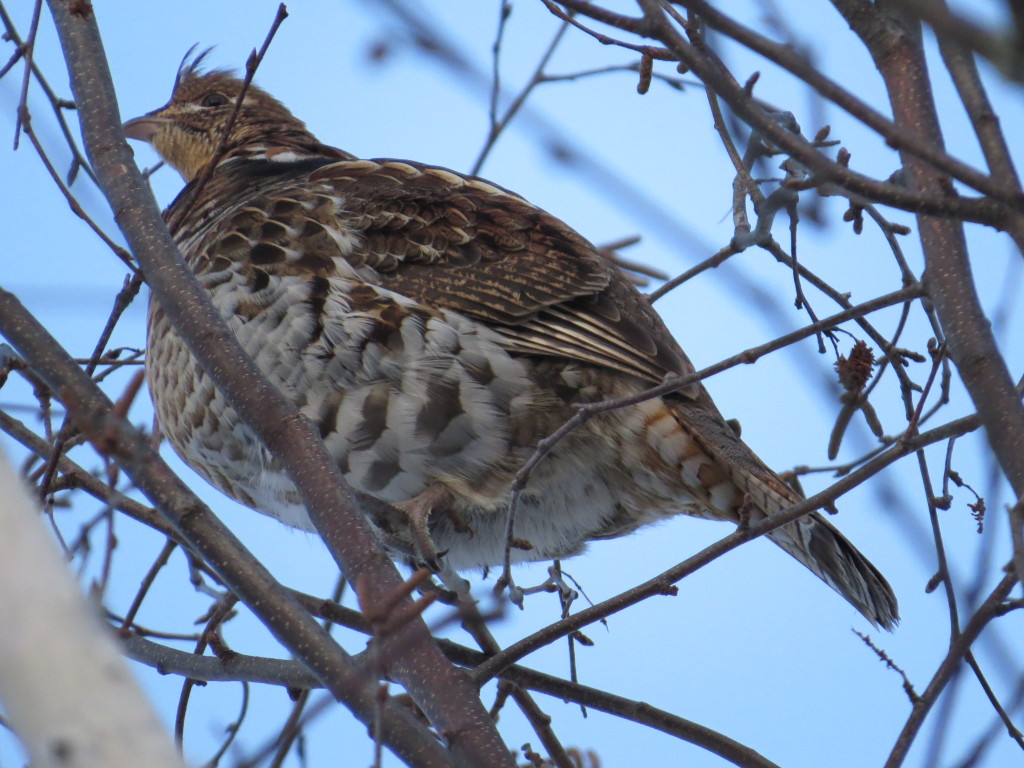
A Golden Opportunity for Sparrowing
Being in northern Minnesota puts one in striking distance of multiple great birding opportunities. And in the case of this birder, it also puts him in close proximity of many relatives. Therefore the decisions must be weighed carefully; there is no room for making a foolish birding decision with a limited amount of time to bird. The Sax-Zim Bog venture was savvy and efficient as it was en route to our destination. With some successful owling in the Bog, I didn’t feel the need to go back. Instead, there were two other options that were now vying heavily for my attention: go to the Isabella area in Lake County after reports of gobs of Spruce Grouse, Black-backed Woodpeckers, Northern Hawk Owls, and Boreal Chickadees or go back to Duluth to try to see Minnesota’s 10th only Golden-crowned Sparrow. Time and distance would not allow me to do both. The boreal birds were really appealing to me, but I instead made the more logical, albeit less fascinating, decision to go after the sparrow. The boreal birds will always be boreal, but the Golden-crowned Sparrow will not. Also, being up north only put me 1.5 hours away from Duluth instead of the normal 3.5 hours away. It was the right thing to do.
One of my benchmarks for deciding to chase a rarity is whether or not Randy chases. If he’s never seen it, then it’s an incredible bird. 2014 has been unbelievable as Randy has added seven state birds when he normally gets one maybe every couple years. The Golden-crowned Sparrow was one such bird. Being on opposite ends of the state did not allow us to chase together, but that didn’t stop us from joining forces at dawn last Saturday in Duluth. I was glad to not be going about this alone as this Sparrow had been showing up sporadically at Jeff Newman’s feeders on Regent Street. Some birders had been traipsing all over alleys and surrounding blocks in their efforts to locate the Golden-crowned. That seemed like a daunting proposition.
So the plan was to be at the house at first light to hopefully see the Sparrow grab its first meal for the day. As we stood on the sidewalk (birders were not to go on the lawn) in the pre-dawn of a cloudy day looking to the feeders in the backyard, we could barely make out the silhouette of the first bird to land on the ground. Just as it did, the homeowner, Jeff, came out his door to announce the identification he made from his much closer view from inside the house.
“White-throated Sparrow!” Back inside he went.
That silhouette flew and was replaced by another.
“Golden-crowned Sparrow!” Jeff proclaimed as he came out his front door for the second time in as many minutes. With the shared lifer now under our belts, Randy and I were no longer waiting on the bird but on the sun for some better looks at what we traveled so far to see. Here is one of those sketchy first looks in the dim morning light.
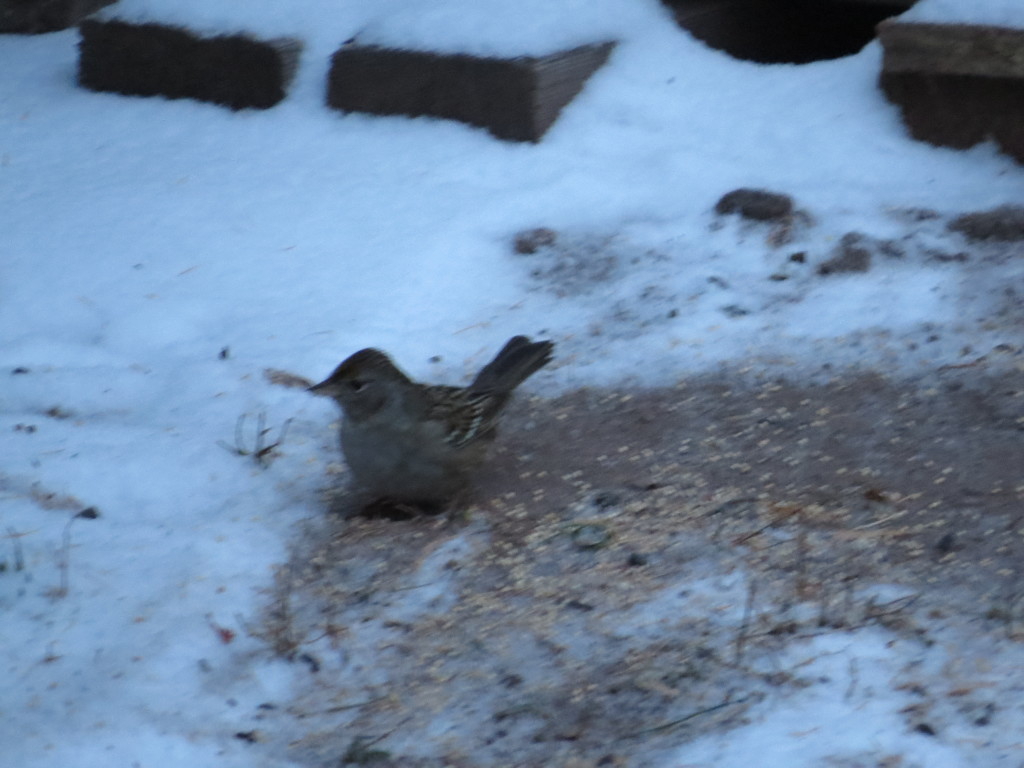
Just as other birders had said, the Sparrow did not spend much time feeding. Instead, it hung out in two cedar trees near the feeders. Now the sun and the branches were conspiring against us.
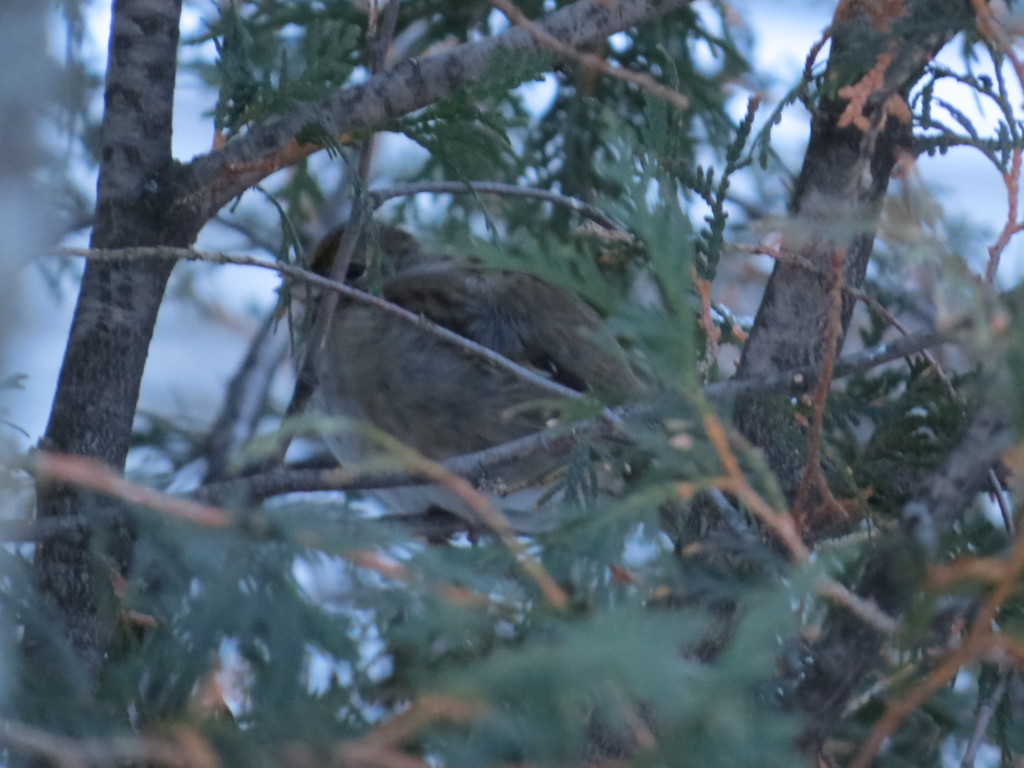
But eventually things started looking up as the morning progressed and the bird came out into the open for brief spurts.
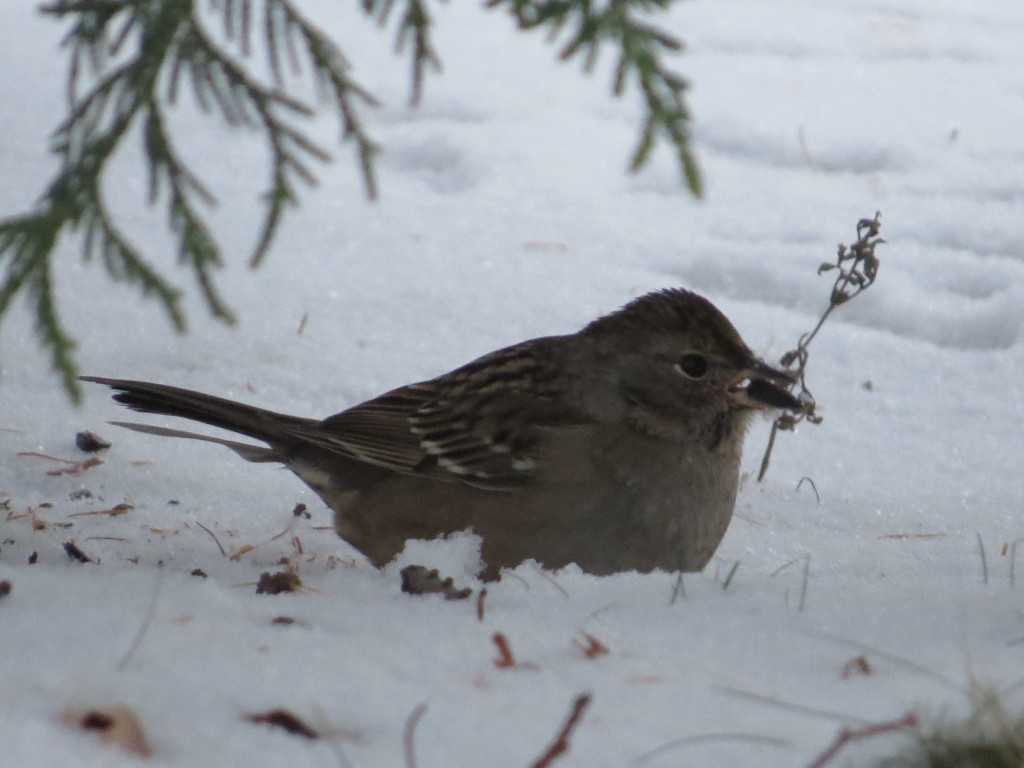
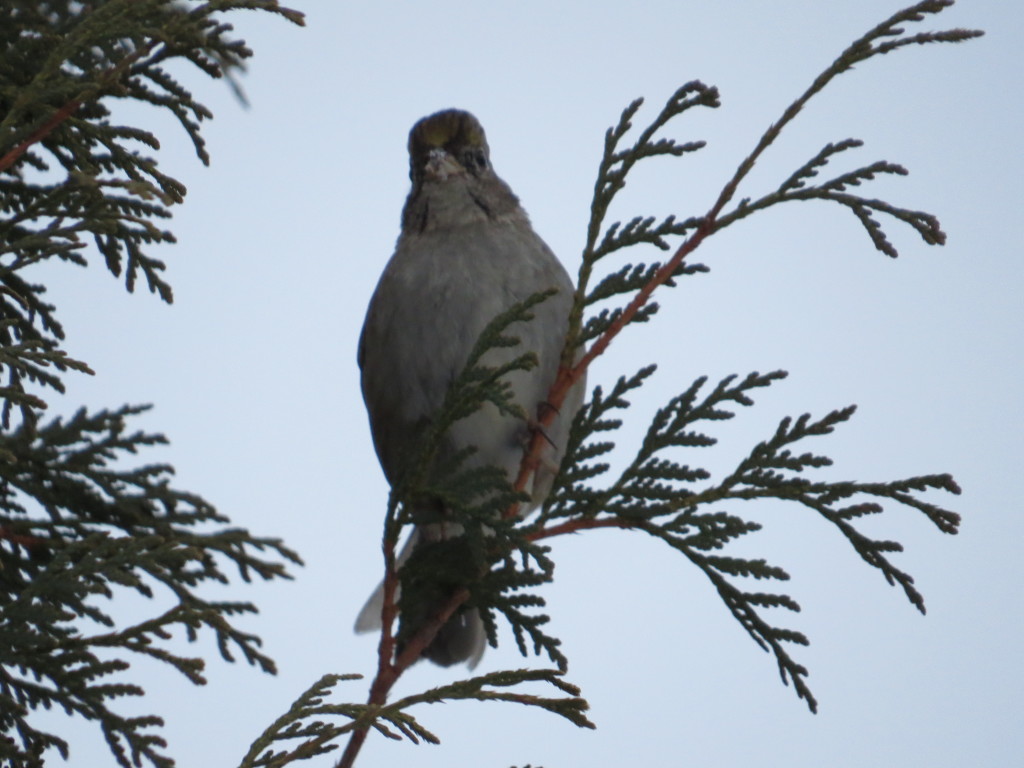
Then, finally, after an hour there was decent light and a perfectly-perched bird.
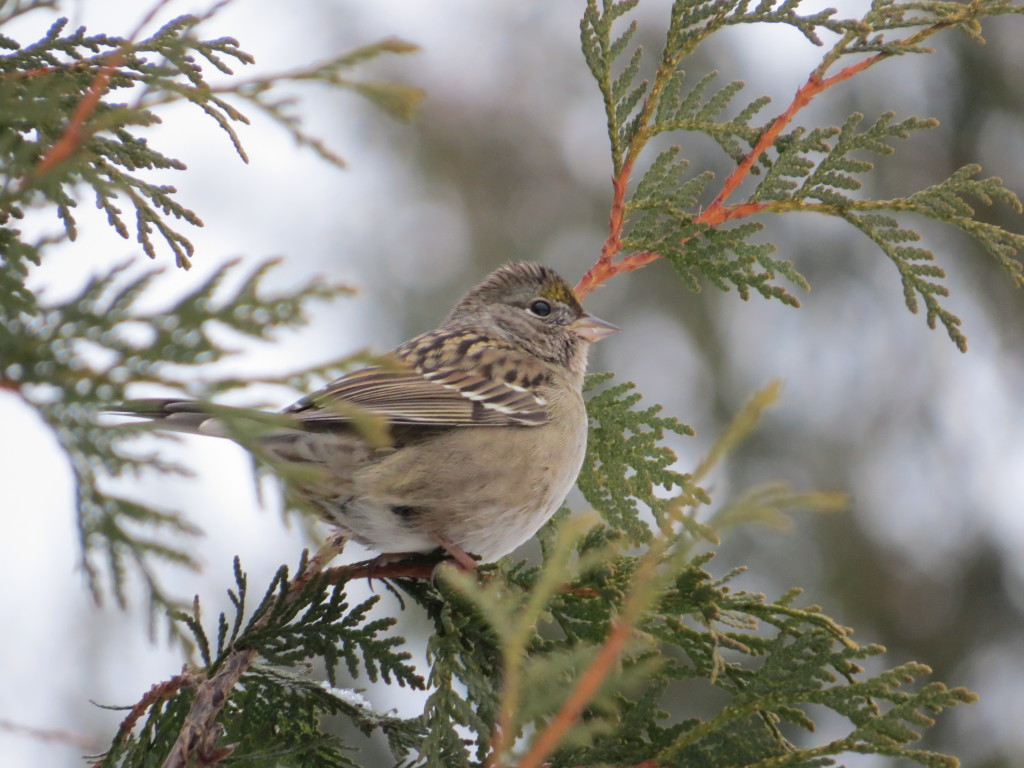
With a lifer and an okay photo, it was time to move on with the day. Randy and I split. He went for that Common Eider while I contemplated my next move. It was now 8:00, and I didn’t have to be anywhere until 2:00. I was tempted to go to Isabella, but the distance and my lack of experience in that area caused me to decide against it. Instead I opted to hang out in the Sax-Zim Bog for a few hours which was on my way home. My next post will detail some of the random good birds I found in the Bog and in other parts of the Iron Range.
